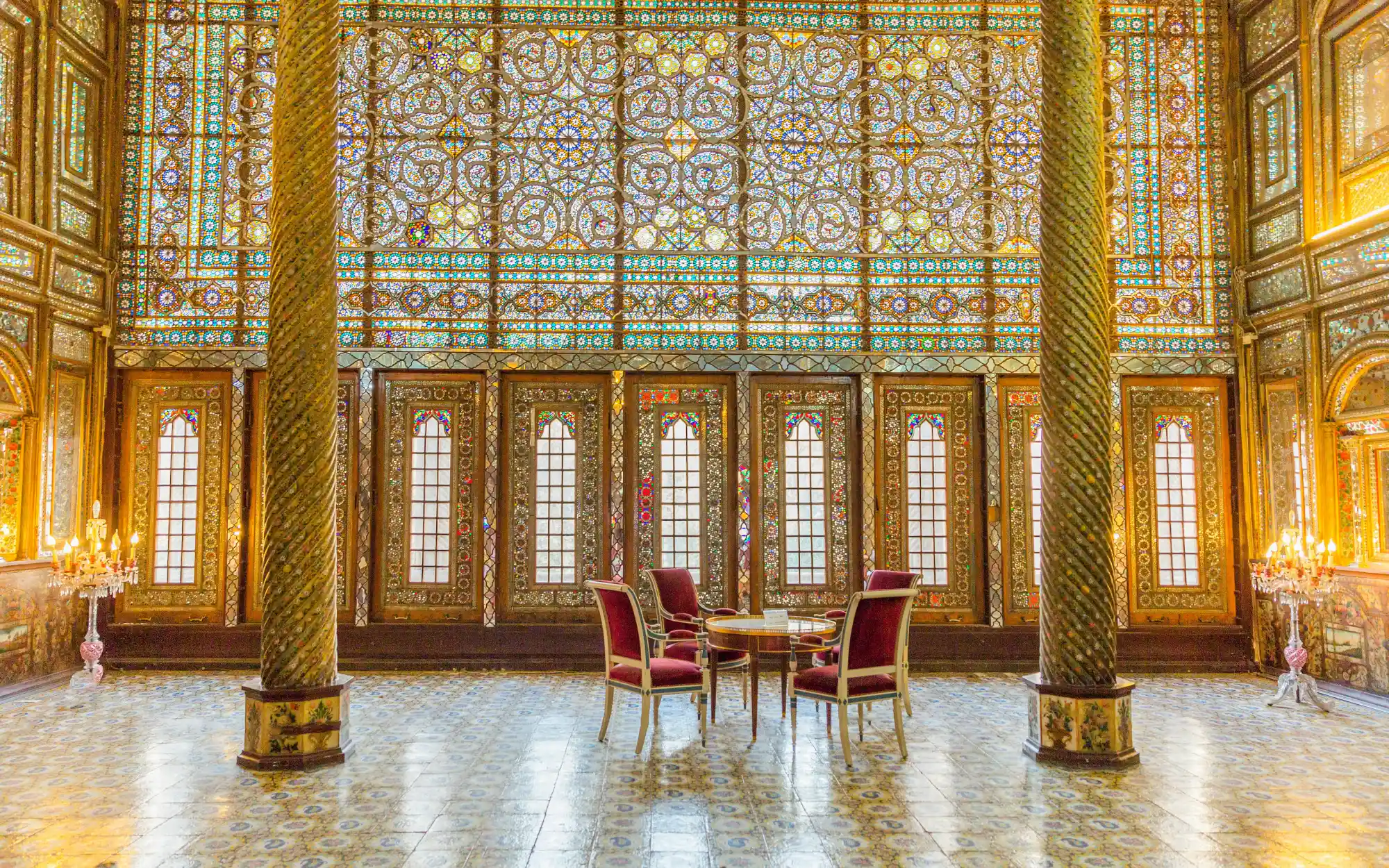
The Golestan Palace, pride and architectural wealth of Tehran
The Golestan Palace is one of the most famous historical buildings in Tehran, the capital of the country. Built in the 16th century under the reign of Shah Tahmasp I of the Safavid dynasty, it was the residence of the Persian rulers for many years and is characterized by a fusion of Persian architecture with typically European construction technologies. Throughout its nearly 5 centuries of existence, the complex has undergone continuous renovations and improvements both aesthetically and architecturally, reaching its peak between the late 19th and early 20th centuries.
This impressive architectural complex consists of several buildings of fabulous halls built around beautiful gardens. The palace buildings show representations of the synthetic and Persian-European style, one of the characteristics of Iranian art and architecture of the late 19th and early 20th centuries. The gardens are equally impressive, with fountains, ponds, and meandering paths leading visitors through the palace's beautifully landscaped grounds. With design elements that include colorful mosaics, intricate stucco and stone carving details, this fabulous palace is an Iranian architectural icon.
One of the most outstanding spaces of the Golestan Palace is the Marble Throne Hall, known as Iwan Takht-e Marmar, where the coronations of the sah kayars and other official ceremonies were held. It is located in the central Iwan of the palace and is one of the oldest buildings. The Iwan is an architectural element formed by a large porch under an arch, hall or rectangular space, enclosed by walls on three sides, the other being completely open.
With its impressive architecture, beautiful gardens and collections of art and jewelry, Golestan Palace is a symbol of Iran's cultural and historical richness.

One of the lavishly decorated rooms of the palace.
This majestic hall features high ceilings, mirrored and mosaic walls and intricate detailing throughout. The main feature of the hall is the Marble Throne; a sculpted marble platform made of yellow Yazd marble and adorned with paintings, reliefs, tiles, stucco, mirrors, enamels, woodwork and latticework, constituting an example of the finest Iranian architectural sculpture. The last coronation held at the Marble Throne was that of King Reza Shah in 1925.
In addition to the Marble Throne Hall, the spectacular palace complex has other impressive structures, such as the Palace of the Sun, also known as Shams ol-Emaré, being remarkable for its height and ornamentation. It was built in the second half of the 19th century in a style of clear European influence, in which French and Austrian architects participated. In its time, it represented the largest and most impressive structure in Tehran.
Other impressive rooms for their rich ornamentation include the Hall of Mirrors, known for its magnificent decoration with mirrors, stained glass and carved glass; the Bright Hall, where mirrors are also intricately combined to form a sublimely decorated space, or the so-called Emarat-e Badgir, or Palace of the Wind Towers, with its stucco, stained glass and marble decorating every corner, is also one of the oldest spaces in the complex.
In addition to being an important tourist attraction, Golestan Palace is also a symbol of Iran's pride and cultural richness. After the Iranian Revolution of 1979, the palace became a historical and architectural museum, housing a large number of works of art. In 2013 it was declared a UNESCO World Heritage Site.
Welcome to Iran!
Share this Sight with: